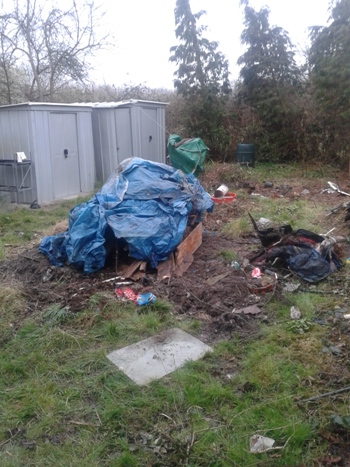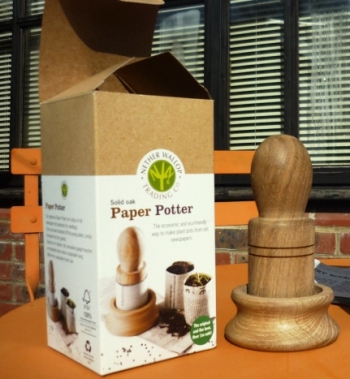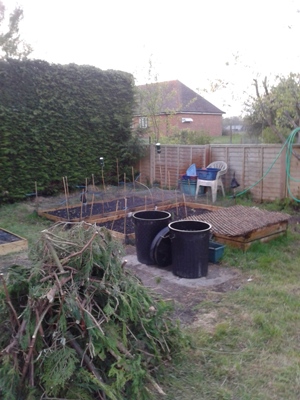Growing Our Own - The Transformation Begins
When we were given access to a small patch of overgrown land, to clear and grow our own fruit and vegetable, we seized the opportunity and began work at the beginning of March to transform our patch into an allotment space.
Share our highs and lows as we begin to grow our own and follow our journey through to the harvest when we hope to have a selection of produce we can use to create homegrown recipes.Our allotment space had been neglected for a few years and in that time had become home to a fair amount of discarded items, including old lawnmowers, beds, bicycles and broken bottles, so the clear-up task took up most of our time in March, while we were planning on where and what to grow.
After a few trips to recycle our reclaimed rubbish we began cutting back and pruning the many blackberry bushes that had run amok. A number of evergreen firs had become damaged and had to be removed before they fell and a plum tree received a good trim in time to blossom and produce for this season. Our veggie beds were constructed from a selection of reclaimed wood and some new raw cuts purchased from our local wood yard. Much of the new soil needed was bought in via our local milkman, who surprisingly still delivered it all to the door. Working together involved the whole family and as the clearing began we were all able to encourage each other and plan our planting, as well as spend quality time reclaiming the land.
In early March we also began planting our seeds indoors, in our own pots made from recycled newspaper, and with a little help from our Paper Potter. This brilliant gadget turns a single sheet of newspaper into a biodegradable seedling pot, which can be easily filled with soil, planted and popped into a propagator tray.
Once the seedlings are ready to plant out you simply dig a hole and pop them in, complete with paper and soil and the minimum of fuss and disturbance to the young growing plants. Because the paper retains the water they are kept moist and in the perfect environment in their little propagators and before too long we had a lovely collection of tomatoes, courgettes, sprouts and carrots starting to grow on the windowsill. Now all we had to do was to construct and prepare some outside beds, and with the March weather taking a warmer turn it seemed the ideal time to get going. We had a lot of chopped wood from the fir trees and more room that we had originally anticipated once cleared so we found we could also incorporate a wild area. We constructed a log pile for the bees and other insects, along with a wild plant and flower corner, where we will be sowing a selection of wild flower seeds and installing a small pond for the local frogs and toads.
Beside our plum tree we will be planting gooseberries, blackberries, raspberries and strawberries for our fruit section and a selection of passion fruit plants are on their way to replace the firs and cover the exposed bottom fence. In our clearing effort we found a few smaller trees in tubs where fallen seeds had begun to grow and these have all since been added to the end of the garden to grow.
As complete 'grow your own' beginners we were excited to see our seedling begin to flourish - and equally dismayed when the heavy rain replaced the sunshine and washed over half of them away. Gardening and growing you own comes with a steep learning curve for beginners but as we go into May we have over half of our tomatoes hanging on to their spot, two strawberry plants growing, an abundance of radishes, carrots and potatoes already on the go and from the piles of the many bonfires Rhubarb is sprouting. The potatoes are growing in two plastic bins and will be covered in soil as they continue to shoot. This is a great way of using the old bins and containing the potatoes in an easy to reap location.
Old plastic boxes from shopping that we had in the garden make fabulous deep planters for our strawberries and carrots, while reclaimed canes that are no longer strong enough to support our beans have been cut to length to fill in the gaps in our log pile, making little tubular homes for the variety of insects we hope to encourage into the area.